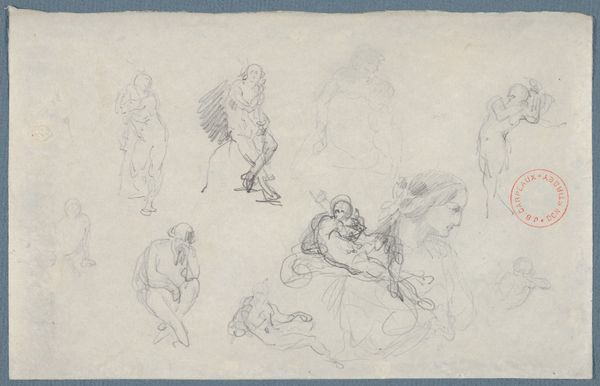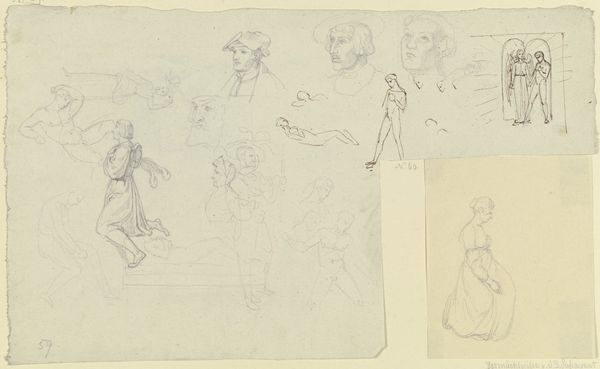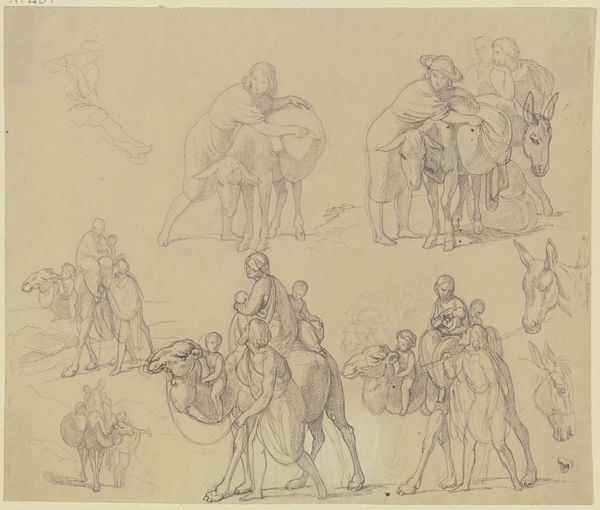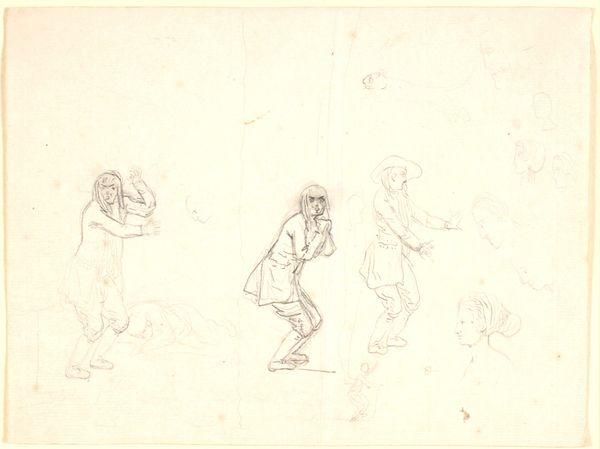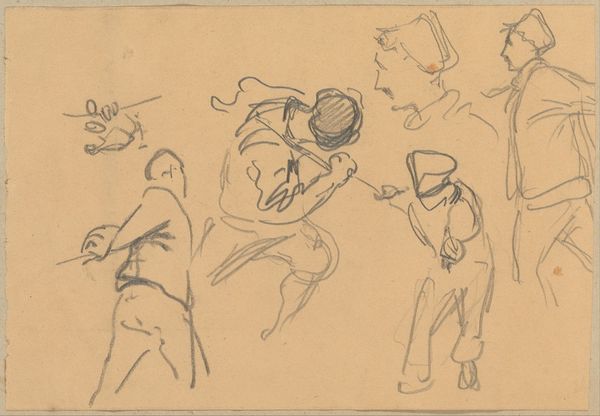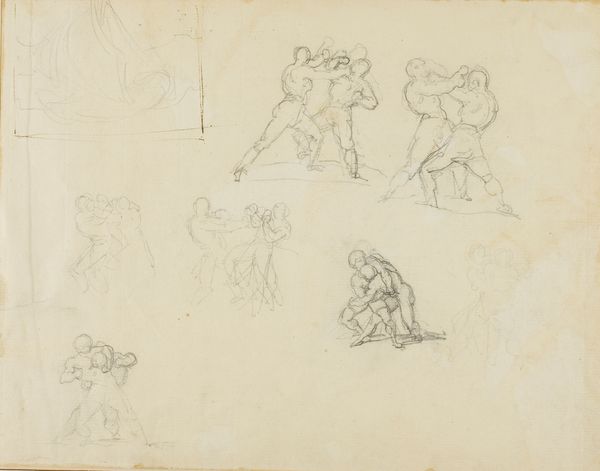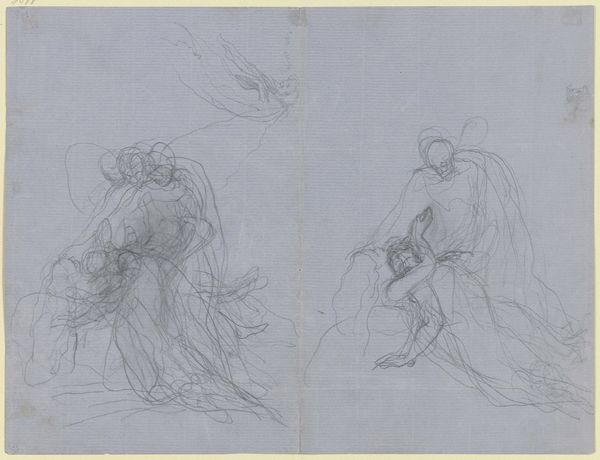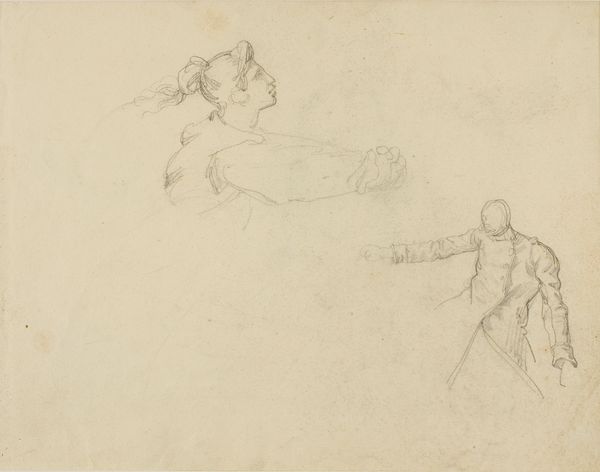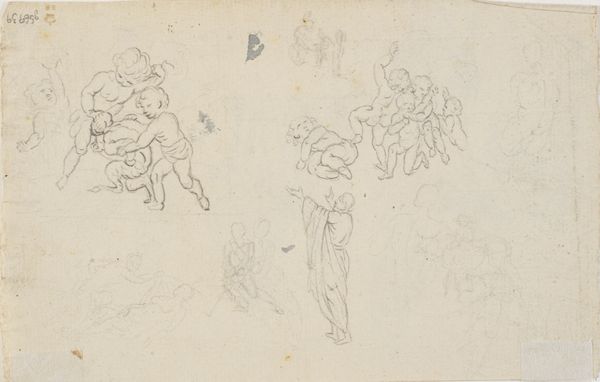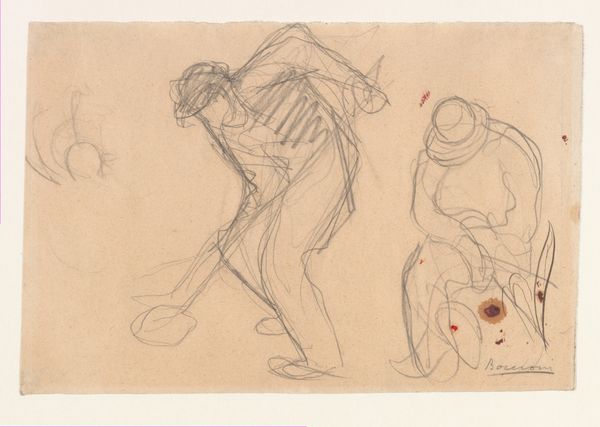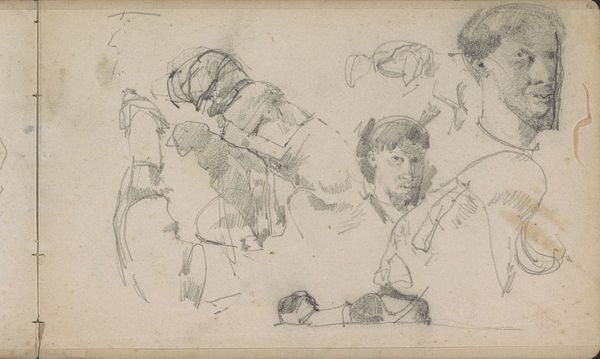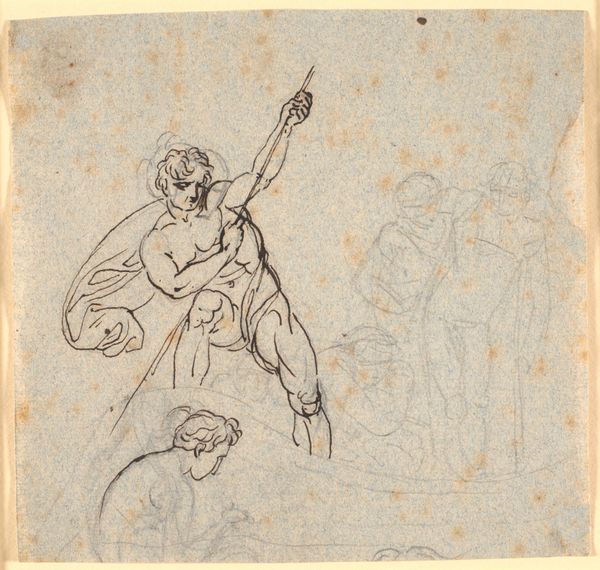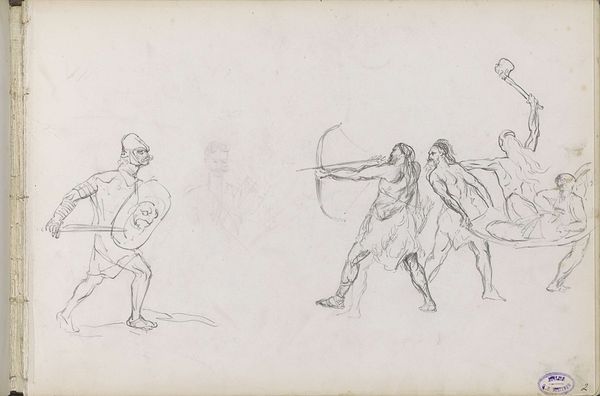
drawing, pencil
#
drawing
#
figuration
#
pencil
#
genre-painting
Copyright: Public Domain
Curator: This drawing, attributed to Carl Morgenstern, is titled "Studienblatt, Fischer und Lasten tragende Frauen"—Study Sheet, Fishermen and Women Bearing Loads. Editor: It's quite gestural, almost ethereal. I'm immediately drawn to the physicality depicted – the strain and labor hinted at in the figures' postures, even though the medium is 'just' pencil on paper. Curator: That physicality is interesting, especially given the likely context. These aren't finished works but preliminary studies. Morgenstern seems to be capturing movements and forms related to labor, likely for a larger genre painting. Think about the cultural fascination with depictions of labor in 19th century art, ennobling the working classes... Editor: Exactly, and look at the man holding what appears to be a fishing net, kneeling, his back muscles almost visibly strained. He is the centerpiece of these quick pencil sketches and invites considerations of fishing techniques as well as social aspects in coastal towns in Germany, the working conditions of this low class. You can imagine him mending it, or perhaps examining his catch. Curator: And the women! The material weight they are carrying. Morgenstern certainly was trying to understand the human figures, with a keen observation of clothing, accessories. I suspect that Morgenstern sought out "authenticity," aiming to capture the true essence of working people within very specific cultural expectations and presentation of these communities. Editor: It's precisely this combination of material grounding and social representation that captivates me. The choice of pencil allows for immediacy but simultaneously carries a sense of ephemerality. Each sketched line contributes to our perception of societal hierarchies. Curator: Seeing these as preparatory drawings helps one understand the artist’s process, almost like looking at his notes before he composes his poem. The raw, unprocessed observation versus the highly refined statement of his final work is truly fascinating. Editor: I agree, stepping back from this work I’m particularly struck with how art historical practices have often excluded drawings, like this example, in favor of traditional master paintings. A close look reveals that drawings challenge conventional definitions of art while forcing us to examine a social critique and the production of imagery. Curator: Absolutely, the study of works on paper makes us question what art actually is, expanding the notion beyond the elitist bubble and considering all labor related aspects surrounding the artwork's genesis and interpretation. Editor: I see these rapidly drawn graphite figures and immediately begin to ponder how "low" subject matters in painting evolved in connection with socio-economic dynamics in European culture, and I wonder why and when these social topics got pushed to the margins of fine arts, overshadowed by history and mythology.
Comments
No comments
Be the first to comment and join the conversation on the ultimate creative platform.
